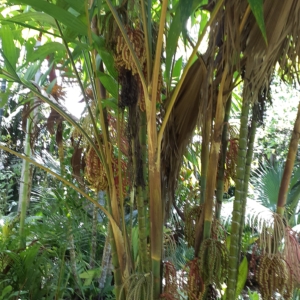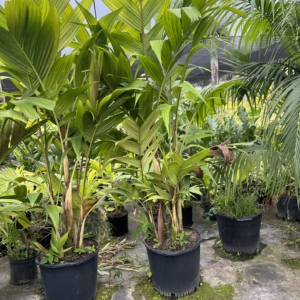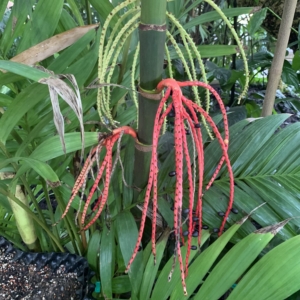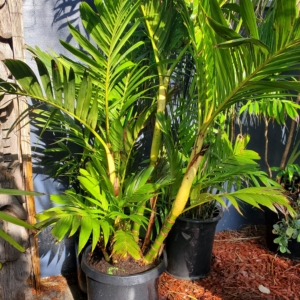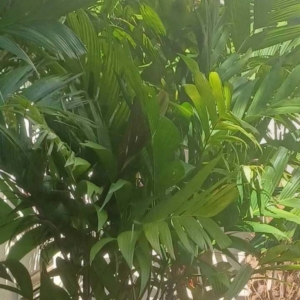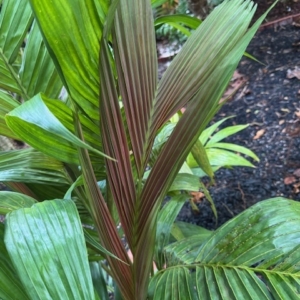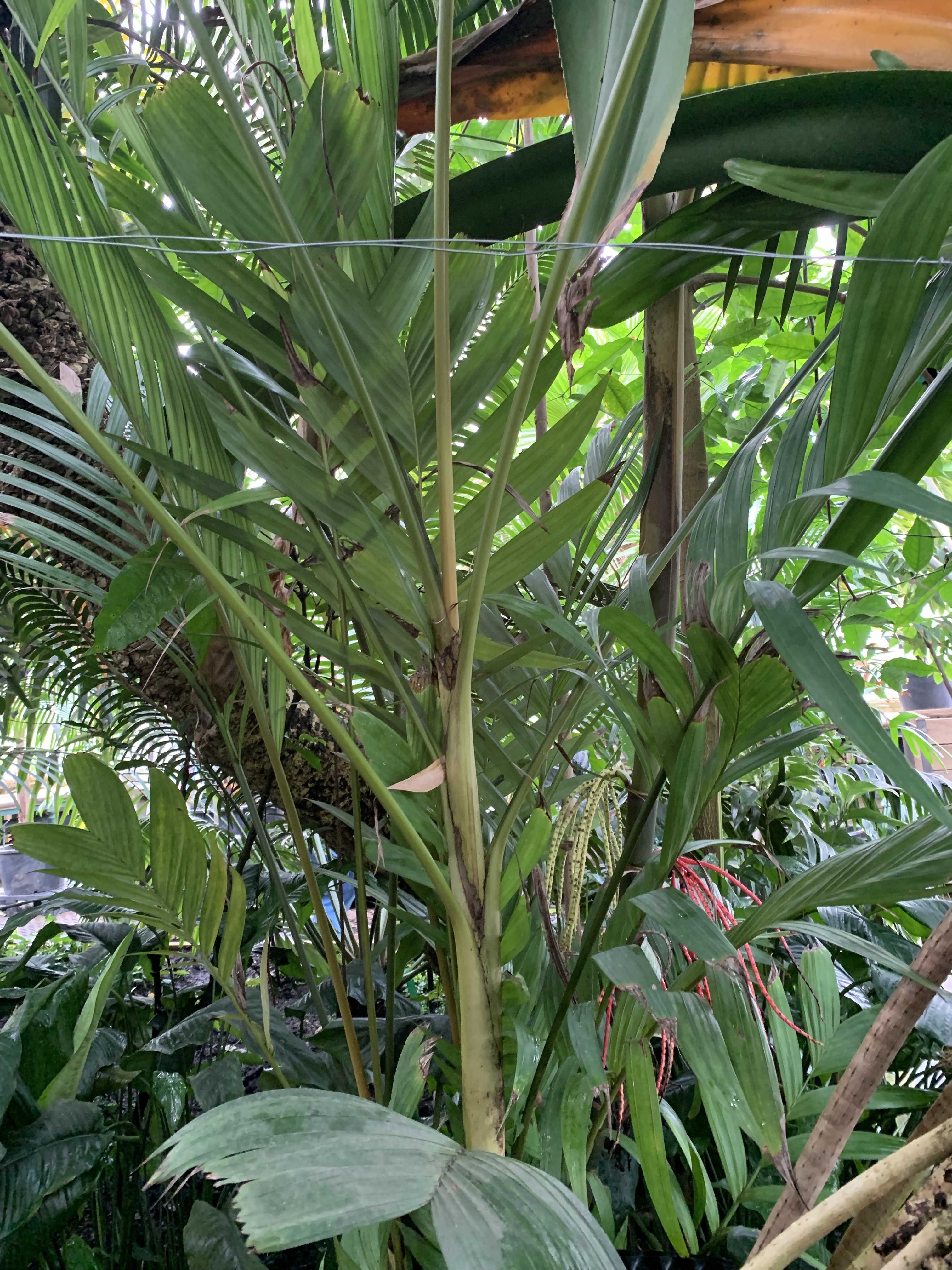Country Of Origin
Lesser Sunda Islands (Indonesia)
![O:31:"craft\elements\db\CategoryQuery":84:{s:27:"�yii\base\Component�_events";a:0:{}s:35:"�yii\base\Component�_eventWildcards";a:0:{}s:30:"�yii\base\Component�_behaviors";a:1:{s:12:"customFields";O:35:"craft\behaviors\CustomFieldBehavior":152:{s:5:"owner";r:1;s:34:"�yii\base\Behavior�_attachedEvents";a:0:{}s:10:"hasMethods";b:1;s:16:"canSetProperties";b:1;s:8:"address1";N;s:8:"address2";N;s:4:"city";N;s:5:"state";N;s:3:"zip";N;s:7:"country";N;s:11:"climateZone";N;s:6:"czZone";N;s:6:"czCity";N;s:10:"czProvince";N;s:9:"firstName";N;s:8:"lastName";N;s:5:"email";N;s:8:"password";N;s:12:"emailAddress";N;s:6:"photos";N;s:10:"photoSize1";N;s:14:"photoLocation1";N;s:14:"photoPlanting1";N;s:6:"photo3";N;s:6:"photo4";N;s:6:"photo5";N;s:14:"photoLocation2";N;s:14:"photoLocation3";N;s:14:"photoLocation4";N;s:14:"photoLocation5";N;s:10:"photoSize2";N;s:10:"photoSize3";N;s:10:"photoSize4";N;s:10:"photoSize5";N;s:14:"photoPlanting2";N;s:14:"photoPlanting3";N;s:14:"photoPlanting4";N;s:14:"photoPlanting5";N;s:10:"photoGroup";N;s:5:"photo";N;s:4:"size";N;s:8:"location";N;s:14:"typeOfPlanting";N;s:5:"agree";N;s:4:"body";N;s:10:"commonName";N;s:4:"zone";N;s:7:"minTemp";N;s:7:"zoneAlt";N;s:10:"growthRate";N;s:17:"lightRequirements";N;s:5:"habit";N;s:8:"heightFt";N;s:7:"heightM";N;s:9:"soilPhMin";N;s:9:"soilPhMax";N;s:8:"priority";N;s:5:"seeds";N;s:8:"seedling";N;s:8:"fourInch";N;s:9:"oneGallon";N;s:11:"threeGallon";N;s:13:"photoSpecies1";N;s:13:"photoSpecies2";N;s:13:"photoSpecies3";N;s:13:"photoSpecies4";N;s:13:"photoSpecies5";N;s:12:"abbreviation";N;s:15:"metaDescription";N;s:13:"metaPageTitle";N;s:11:"socialImage";N;s:19:"descriptionFallback";N;s:17:"globalSocialImage";N;s:13:"titleFallback";N;s:16:"pollAnswerMatrix";N;s:5:"label";N;s:12:"selectedPoll";N;s:5:"image";N;s:10:"recentPoll";N;s:10:"userPhotos";N;s:5:"sizeX";N;s:10:"imageTitle";N;s:21:"inPersonalCollectionX";N;s:9:"locationX";N;s:8:"speciesX";N;s:9:"photoDump";N;s:7:"species";N;s:19:"inPrivateCollection";N;s:15:"typeOfPlantingX";N;s:20:"formerScientificName";N;s:11:"headingList";N;s:4:"text";N;s:7:"heading";N;s:8:"careTips";N;s:8:"mapImage";N;s:13:"speciesPhotos";N;s:4:"user";N;s:20:"inPersonalCollection";N;s:11:"speciesPage";N;s:11:"assignments";N;s:16:"leafTypeDropdown";N;s:23:"countryOfOriginCategory";N;s:10:"linkTarget";N;s:11:"buttonLabel";N;s:12:"externalLink";N;s:12:"internalLink";N;s:9:"inHabitat";N;s:21:"skipPhotoFieldsDetail";N;s:20:"skipPhotoFieldsLabel";N;s:20:"recentSpeciesUpdates";N;s:14:"twitterProfile";N;s:16:"instagramProfile";N;s:15:"linkedinProfile";N;s:15:"facebookProfile";N;s:10:"crownshaft";N;s:14:"threadsProfile";N;s:16:"temperatureRange";N;s:9:"zoneTitle";N;s:15:"newsDescription";N;s:12:"newsImageUrl";N;s:8:"newsLink";N;s:10:"newsSource";N;s:28:"conservationScaleDescription";N;s:28:"conservationScaleStatusColor";N;s:17:"conservationScale";N;s:19:"userFacebookProfile";N;s:20:"userInstagramProfile";N;s:18:"userThreadsProfile";N;s:14:"imagePositionX";N;s:16:"shortDescription";N;s:11:"buttonTitle";N;s:14:"imagePositionY";N;s:6:"newTab";N;s:7:"linkUrl";N;s:10:"hideAuthor";N;s:11:"linkEntries";N;s:14:"authorOverride";N;s:8:"category";N;s:13:"contentBlocks";N;s:12:"callToAction";N;s:12:"calloutTitle";N;s:8:"embedUrl";N;s:6:"images";N;s:15:"singleImageSize";N;s:12:"shopCategory";N;s:14:"shopifyProduct";N;s:13:"speciesSelect";N;s:8:"products";N;s:14:"blueskyProfile";N;s:18:"userBlueskyProfile";N;s:7:"subject";N;s:55:"�craft\behaviors\CustomFieldBehavior�_customFieldValues";a:0:{}}}s:6:"select";a:1:{s:2:"**";s:2:"**";}s:12:"selectOption";N;s:8:"distinct";b:0;s:4:"from";N;s:7:"groupBy";N;s:4:"join";a:1:{i:0;a:3:{i:0;s:10:"INNER JOIN";i:1;a:1:{s:9:"relations";s:14:"{{%relations}}";}i:2;a:4:{i:0;s:3:"and";i:1;s:40:"[[relations.targetId]] = [[elements.id]]";i:2;a:2:{s:18:"relations.sourceId";i:386562;s:17:"relations.fieldId";i:150;}i:3;a:3:{i:0;s:2:"or";i:1;a:1:{s:22:"relations.sourceSiteId";N;}i:2;a:1:{s:22:"relations.sourceSiteId";i:1;}}}}}s:6:"having";N;s:5:"union";N;s:11:"withQueries";N;s:6:"params";a:0:{}s:18:"queryCacheDuration";N;s:20:"queryCacheDependency";N;s:5:"where";N;s:5:"limit";N;s:6:"offset";N;s:7:"orderBy";s:0:"";s:7:"indexBy";N;s:16:"emulateExecution";b:0;s:11:"elementType";s:23:"craft\elements\Category";s:5:"query";N;s:8:"subQuery";N;s:12:"contentTable";s:12:"{{%content}}";s:12:"customFields";N;s:9:"inReverse";b:0;s:7:"asArray";b:0;s:18:"ignorePlaceholders";b:0;s:6:"drafts";b:0;s:17:"provisionalDrafts";b:0;s:7:"draftId";N;s:7:"draftOf";N;s:12:"draftCreator";N;s:15:"savedDraftsOnly";b:0;s:9:"revisions";b:0;s:10:"revisionId";N;s:10:"revisionOf";N;s:15:"revisionCreator";N;s:2:"id";N;s:3:"uid";N;s:14:"siteSettingsId";N;s:10:"fixedOrder";b:0;s:6:"status";a:1:{i:0;s:7:"enabled";}s:8:"archived";b:0;s:7:"trashed";b:0;s:11:"dateCreated";N;s:11:"dateUpdated";N;s:6:"siteId";i:1;s:6:"unique";b:0;s:11:"preferSites";N;s:6:"leaves";b:0;s:9:"relatedTo";N;s:5:"title";N;s:4:"slug";N;s:3:"uri";N;s:6:"search";N;s:3:"ref";N;s:4:"with";N;s:16:"withCustomFields";b:1;s:13:"withStructure";b:1;s:11:"structureId";N;s:5:"level";N;s:14:"hasDescendants";N;s:10:"ancestorOf";N;s:12:"ancestorDist";N;s:12:"descendantOf";N;s:14:"descendantDist";N;s:9:"siblingOf";N;s:13:"prevSiblingOf";N;s:13:"nextSiblingOf";N;s:16:"positionedBefore";N;s:15:"positionedAfter";N;s:17:"�*�defaultOrderBy";a:2:{s:20:"elements.dateCreated";i:3;s:11:"elements.id";i:3;}s:53:"�craft\elements\db\ElementQuery�_placeholderCondition";N;s:51:"�craft\elements\db\ElementQuery�_placeholderSiteIds";N;s:39:"�craft\elements\db\ElementQuery�_result";N;s:47:"�craft\elements\db\ElementQuery�_resultCriteria";N;s:46:"�craft\elements\db\ElementQuery�_searchResults";N;s:42:"�craft\elements\db\ElementQuery�_cacheTags";N;s:42:"�craft\elements\db\ElementQuery�_columnMap";a:0:{}s:51:"�craft\elements\db\ElementQuery�_joinedElementTable";b:0;s:8:"editable";b:0;s:7:"groupId";i:11;} map image](https://projectpalm.net/assets/species/pinanga-coronata/_600xAUTO_fit_center-center_100_none/map-of-Andaman-and-Nicobar-Islands.png)
About Pinanga coronata
This species is a clustering palm native to rainforests of southeast Asia. It forms a cluster of erect, unbranched stems which are topped with a crown of 4–7 dark green leaves, each with up to sixty leaflets. New leaves have a pink cast when they first appear, and then turn yellow or yellow-green over time. In cultivation, it is valued for its elegant form and cream-colored trunks. The pendant shaped branched inflorescence can grow up to one foot long and appears below the leaves and later blooming with creamy white flowers. The small fruit as bright red berries and turns deep purple when ripe.
| Climate Zone | 10b |
| Min Temp (F/C) | 35 to 40 F / 2 to 4 C |
| Leaf Type | Pinnate |
| Height | 20 Ft / 6.1 M |
| Growth Rate | Slow |
| Conservation Status |
Not Evaluated
|
Cultivation Tips
Select a sheltered location that receives full to partial shade. It prefers moist, fertile, well-drained, organic-rich, humus-rich, slightly acidic soil. It will thrive in a humid, tropical climate. Water regularly as this species is not drought tolerant. Feed occasionally during the growing season with a high quality palm fertilizer.
To Contribute To Project Palm!
